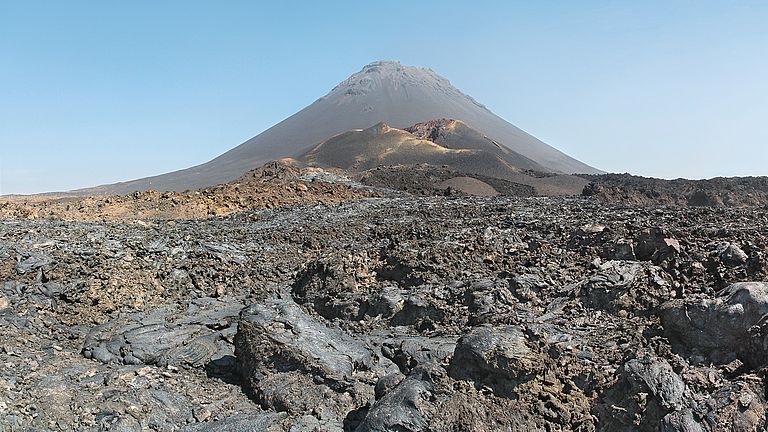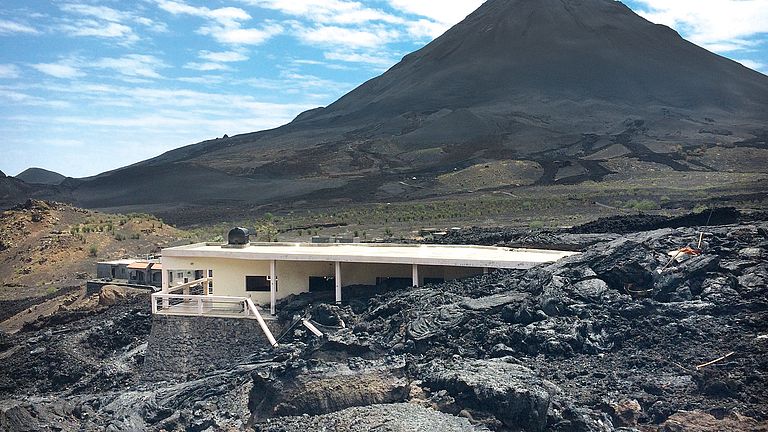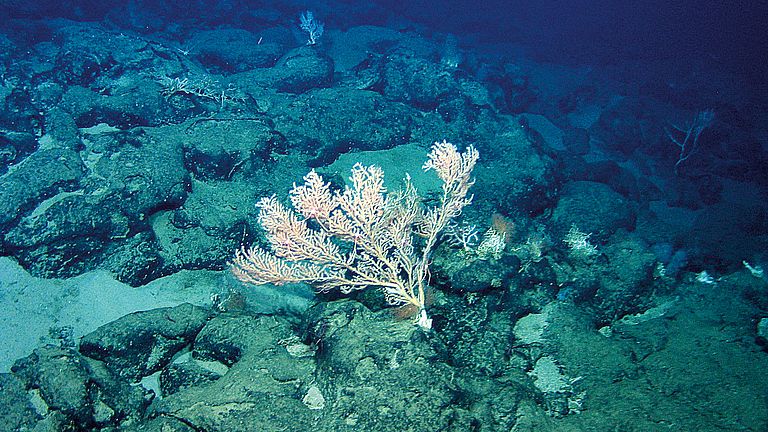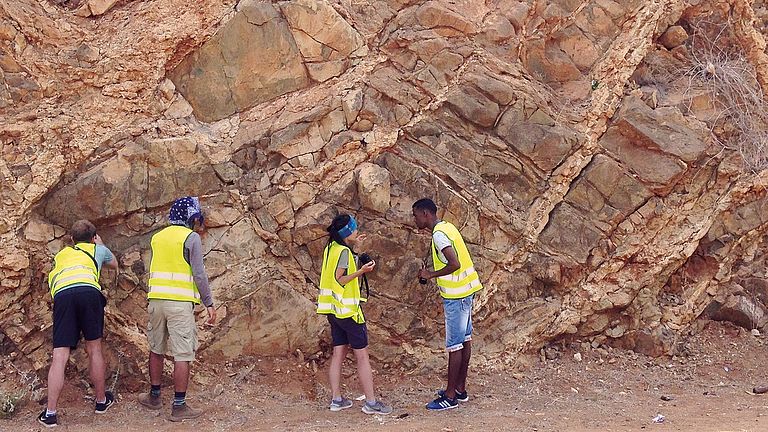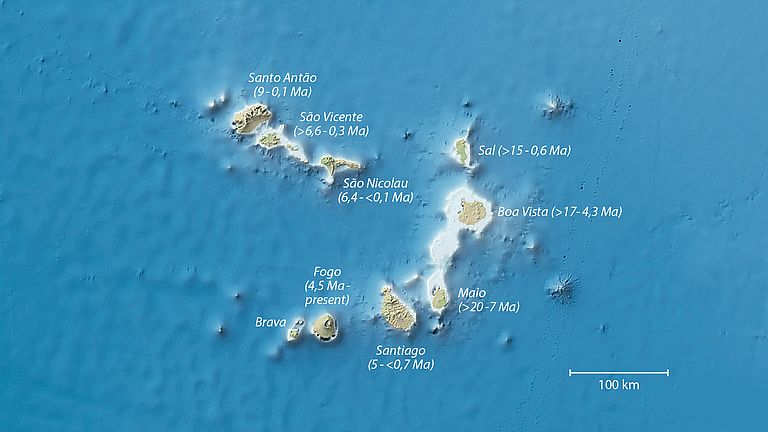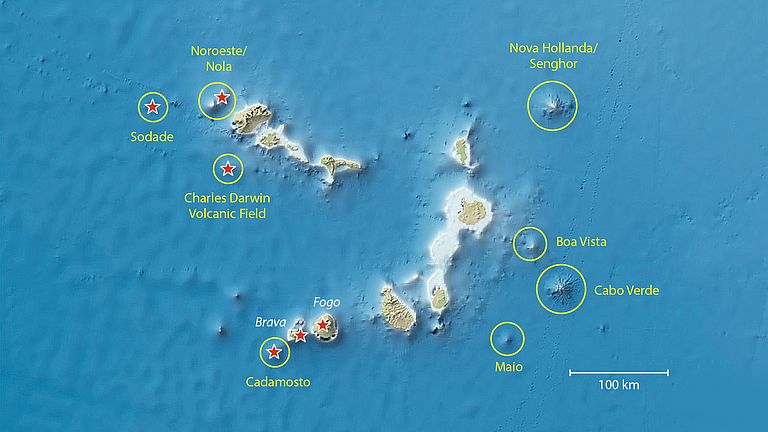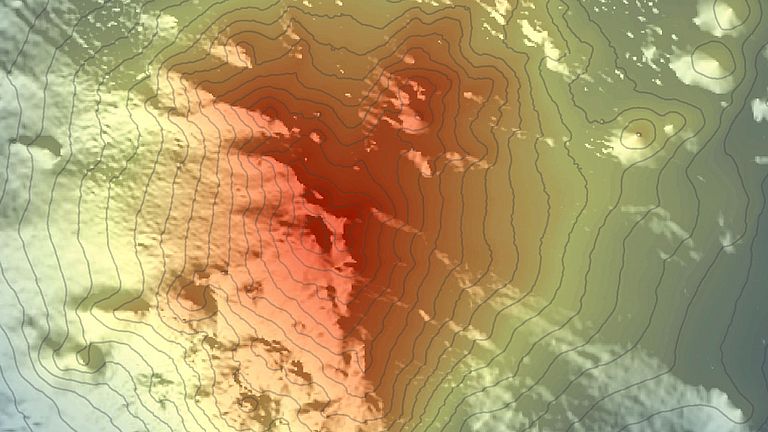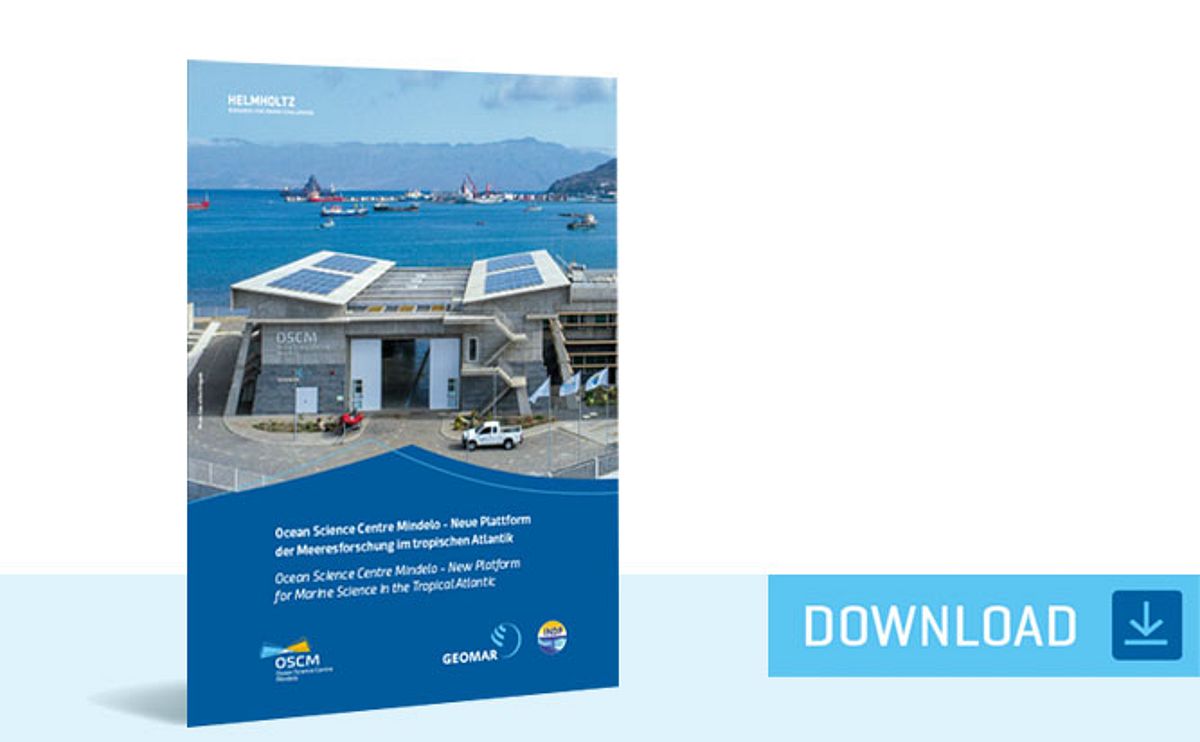Cordula Zenk
Cape Verde Coordinator at GEOMAR
Tel: +49 431 600-4209
E-mail: czenk@geomar.de
Hotspot Volcanism above and under the Sea
Cape Verde comprises islands of volcanic origin, and volcanic seamounts in the submarine part of the archipelago. The volcanism is caused by a so called hot spot: hot ductile rock rises within the deep Earth and forms hot magma, which ascends through the Earth’s surface. As a result, also the regional seafloor arches upward.
Characteristic for Cape Verde are different chemical compositions of rocks, and explosive volcanic eruptions as well as viscous lava flows. The archipelago began to form in the eastern part about 20 million years ago. An age progression towards the east can be observed. At present, the oldest islands (Sal, Boa Vista, Maio) are flat and eroded, whereas the younger western islands have a prominent topography. Fogo is an active volcano, which erupts every 20 years on average and therefore ranks amongst the most active volcanoes in the Atlantic. The westernmost islands and seamounts (Santo Antão, São Vicente, Brava, as well as Nola, Sodade and Cadamosto seamounts) are seismically active, which indicates magmatic activity underground.
Aim of recent studies in Cape Verde is to understand how the archipelago formed and evolved with time, for example where the next island could form, and which natural hazards the local population faces.


